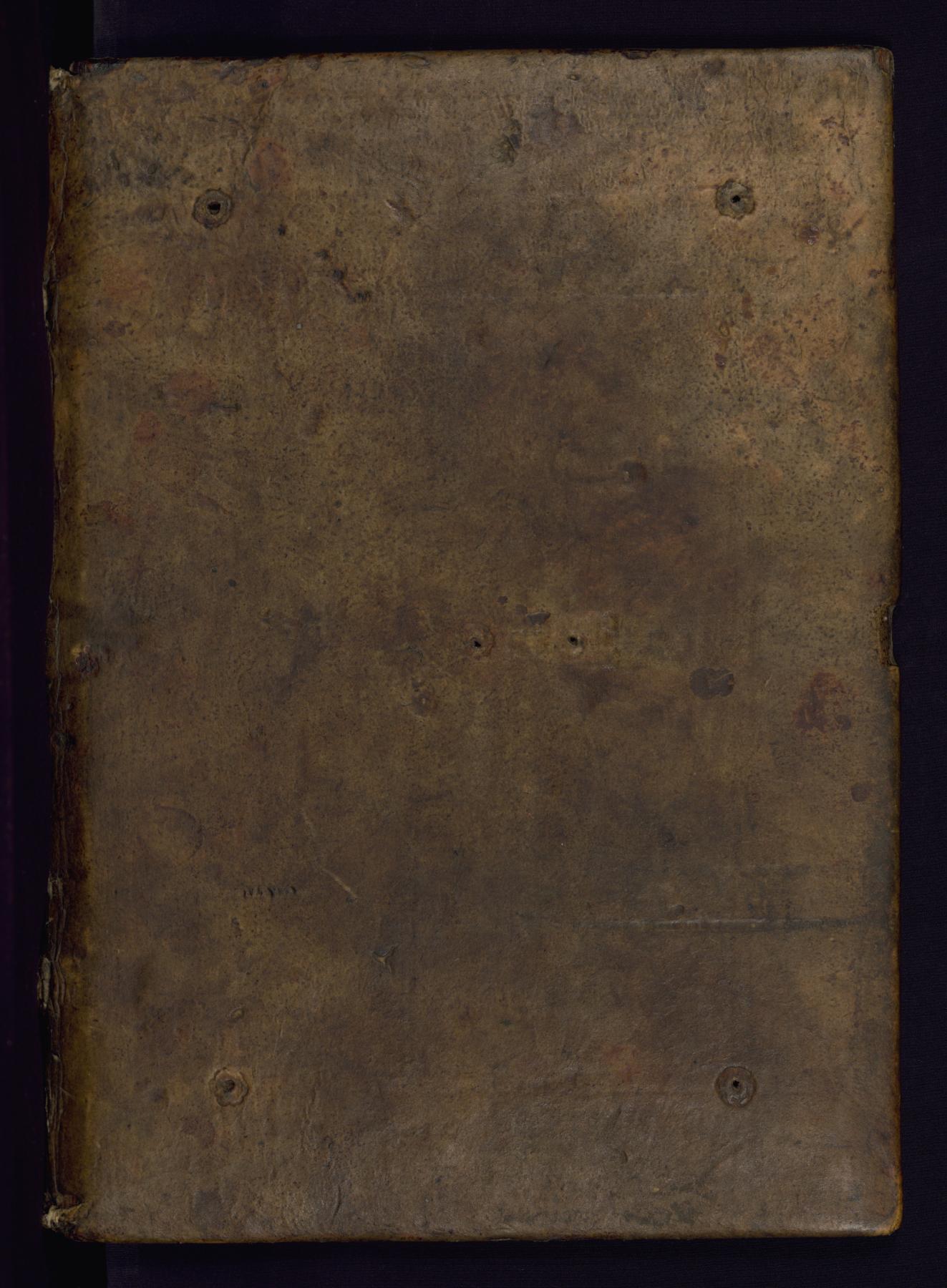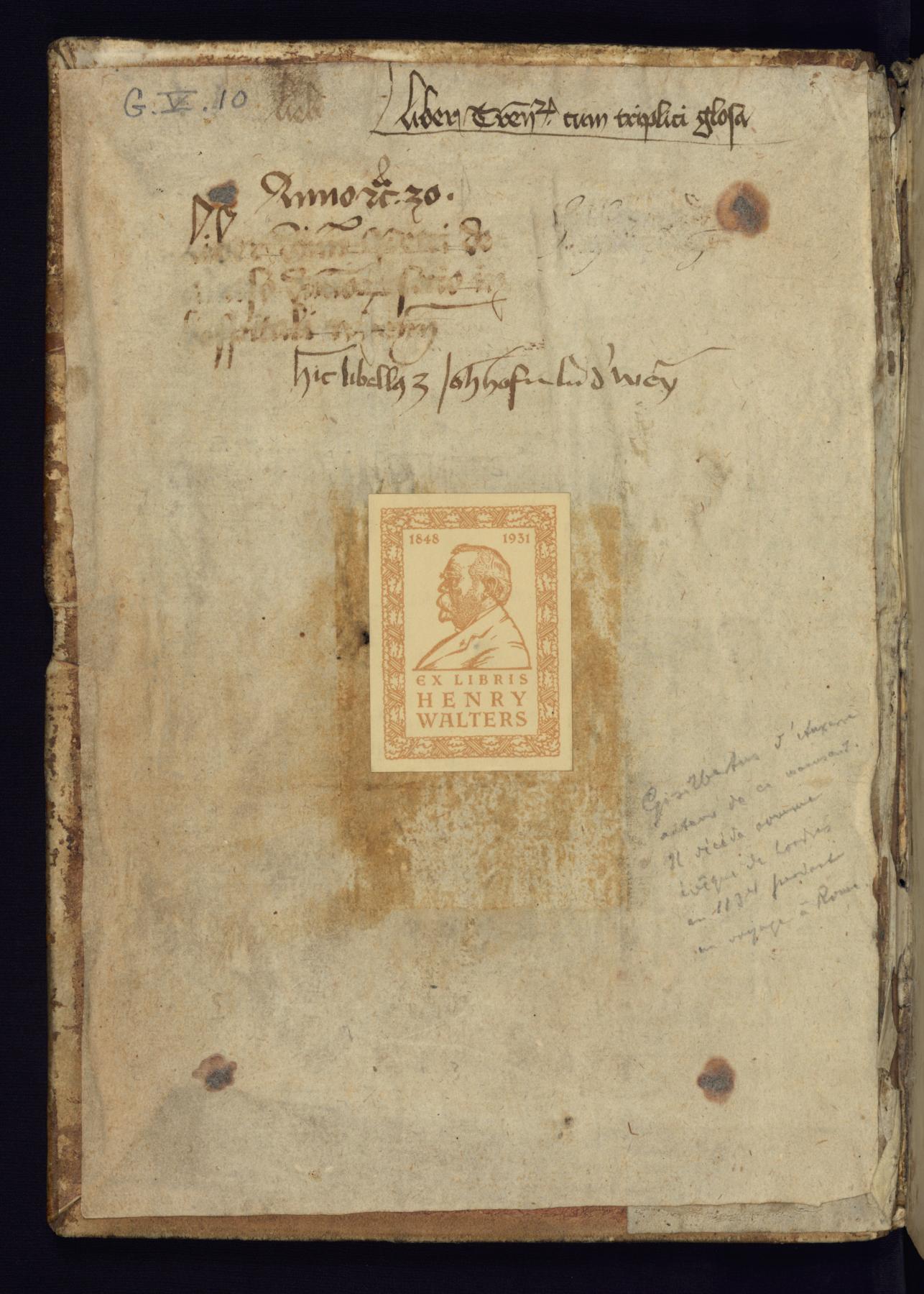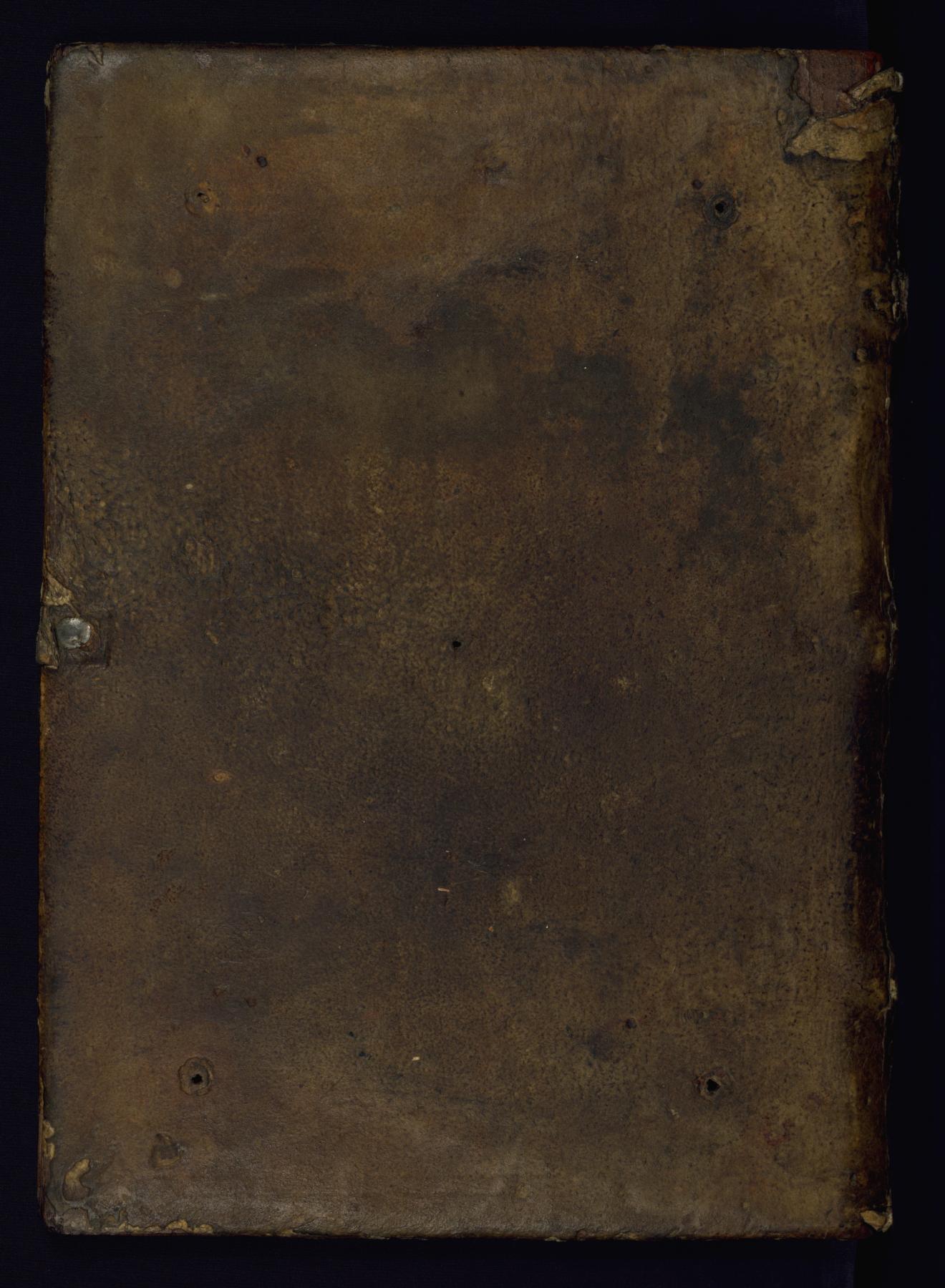Binding from Gloss on The lamentations of Jeremiah
Binding is original. Plain alum-tawed leather over oak(?) boards; center fore-edge strap meant to fasten to pin on upper board missing; sewn on three alum-tawed straps; endbands of a single rolled alum-tawed core, worked with similar thread to main sewing; double blind lines on each band; saltire cross formed from two double lines on upper board; five small steel studs once on each board, with a six-petaled impression remaining from each of them.
Provenance
Provenance (from the French provenir, 'to come from/forth') is the chronology of the ownership, custody, or location of a historical object. Learn more about provenance at the Walters.
Made in Austria in the second half 12th century; Petrus de Anaso, Weyer, ca. 1500, [mode of acquisition unknown, inscription partially erased on front pastedown reading, "Anno etc. 30. Liber dom.[?] Petri de Anaso dominum socio in hospitai Wienn[ensi]"]; Johannus Hofulner(?) [date and mode of acquisition unknown] [sixteenth-century inscription on front pastedown reading, "Hic libellus est Joh[annis] hofulner[?] de Wey[er]"]; Abbey of Seitentetten, by early 20th century, [mode of acquisition unknown, seen by Hanns Swarzenski there]; Jacques Rosenthal, by 1928, cat. 90, no. 139 [mode of acquisition unknown]; Leo S. Olschki, after 1928 [mode of acquisition unknown, bookplate on front pastedown]; Henry Walters, Baltimore, before 1931, by purchase; Walters Art Museum, 1931, by bequest.
Geographies
Austria (Place of Origin)
Measurements
H: 10 3/16 x W: 7 3/16 in. (25.8 x 18.2 cm)
Credit Line
Acquired by Henry Walters
Location in Museum
Not on view
Accession Number
In libraries, galleries, museums, and archives, an accession number is a unique identifier assigned to each object in the collection.
In libraries, galleries, museums, and archives, an accession number is a unique identifier assigned to each object in the collection.
W.30.binding

















